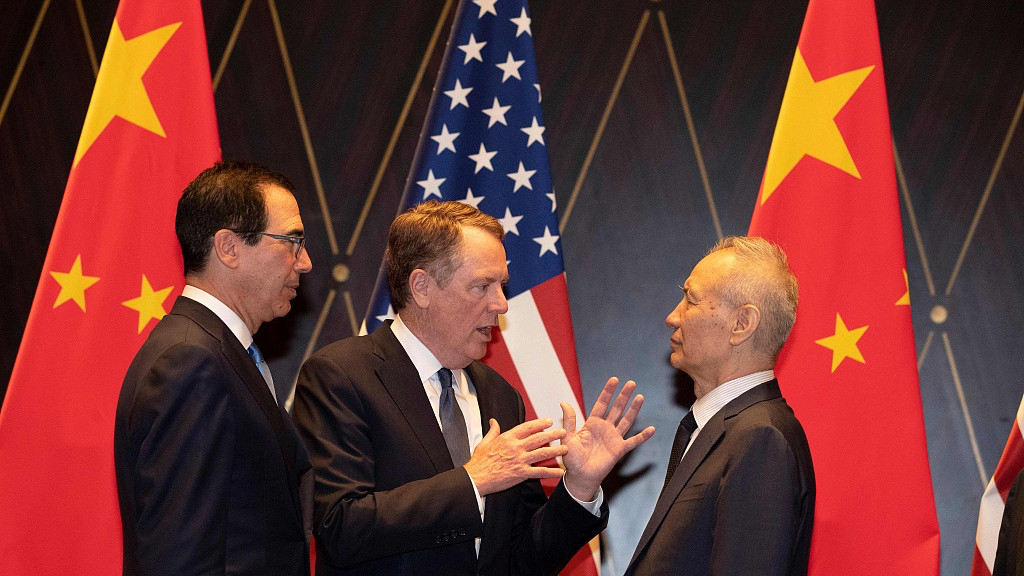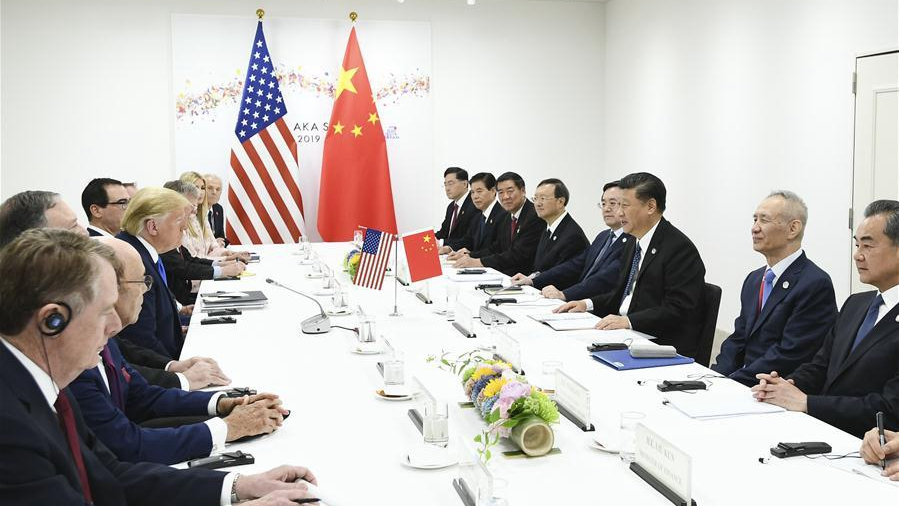

Editor's note: Dr. John Gong is a research fellow at Charhar Institute and professor at the University of International Business and Economics. The article reflects the author's opinions, and not necessarily the views of CGTN.
The Sino-U.S. trade negotiations are so troublesome that the two teams cannot even agree on what they have agreed upon. Furthermore, even this kind of disagreement over agreement exists within the White House.
On July 31, the White House Press Secretary put out an official statement, saying "The meetings were constructive." The next day U.S. President Donald Trump launched a tweet storm that he will start imposing tariffs at 10 percent on the remaining 300 billion U.S. dollars' worth of Chinese exports to the U.S. Now we get an education on the new meaning of "constructive" in international relations.
There were troublesome signs even before the meeting in Shanghai. When answering a journalist's question the day before the American team left, President Trump went into a lengthy ranting and raving against China, claiming that China is waiting for his ousting from the White House to deal with a Democrat President, and his usual cliché that the trade surplus China has been maintaining with the U.S. is all loss to the U.S., as if it is money stolen from the U.S.
Then the news came that the talk in Shanghai ended much earlier than expected - by 40 minutes, and the American team immediately headed to the airport right after noon time without talking to any reporters.

U.S. Trade Representative Robert Lighthizer (L) and U.S. Treasury Secretary Steven Mnuchin (3rd L) walk with Chinese Vice Premier Liu He (2nd L) as they arrive for a photo at the Xijiao Conference Centre in Shanghai on July 31, 2019. /VCG Photo
When the official press release respectively from the two sides came out, the differences between the two sides are obviously on display. One of the big differences pertains to the agricultural purchases Trump mentioned in one of his tweets. The Chinese version reads that China is in the process of placing big orders for U.S. agricultural products, and that the U.S. is going to create favorable conditions for such big purchases. However, the American version lacks the latter part, as if these big agricultural purchase orders are unconditional. Trump's tweets appear that way.
Another big difference is the use of adjectives to characterize the talk. The Chinese version says it is frank, efficient and constructive. The American version apparently disagrees that it is "frank" and "efficient", but keeps the word "constructive" in the White House Press Secretary statement. But even a constructive talk could be interpreted as Lighthizer and Mnuchin going back to Washington "empty-handed" in the eyes of President Trump.
Finally, the American version also emphasized the word "enforceable"; it says it is negotiating over an enforceable trade deal. The Chinese version does not contain that word.
All signs are showing that Washington and Beijing are still thousands of miles apart on a trade deal, even though leaders of both sides have claimed the intention to resolve the trade dispute. President Xi has said there are a thousand reasons to manage well the Sino-U.S. relations. So what are the real impediments in this case hampering a deal? Do these reasons have any hope of being ever resolved?

Chinese President Xi Jinping meets with U.S. President Donald Trump in Osaka, Japan, June 29, 2019. /Xinhua Photo
The emphasis on "enforceable" in the White House statement says it all. Allegedly the stumbling blocks are not so much with respect to those so-called structural issues. The stumbling block pertains actually to a set of statutory revisions the U.S. demands as an enforcement mechanism to guarantee China’s commitment to addressing these structural issues. But China has already made it clearly that it will not accept a deal that compromises its sovereignty.
In response, my advice to the American side is two fold. First, do not impose your American way of thinking and doing things on China. Washington may be able to do that on some other countries. It may have succeeded on Japan. But China is different.
Second, do not expect to achieve the objective in one gigantic step at once when it comes to addressing such complicated matters as structural reforms. In China, we do things in an orderly fashion as opposed to some kind of shock therapy. Perhaps the U.S. can read some books on Chinese history to understand why.
(If you want to contribute and have specific expertise, please contact us at opinions@cgtn.com)

Copyright © 2018 CGTN. Beijing ICP prepared NO.16065310-3
Copyright © 2018 CGTN. Beijing ICP prepared NO.16065310-3